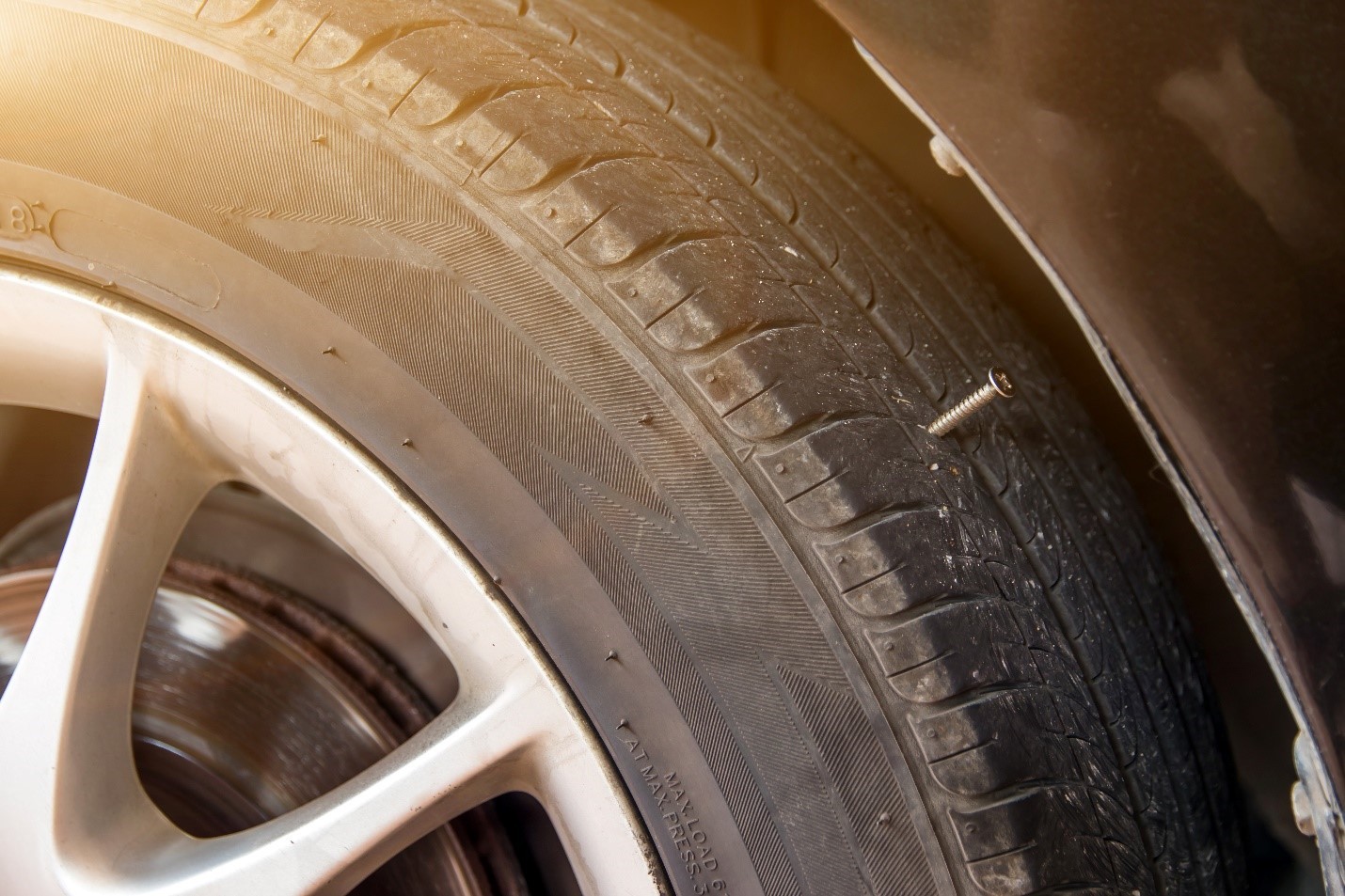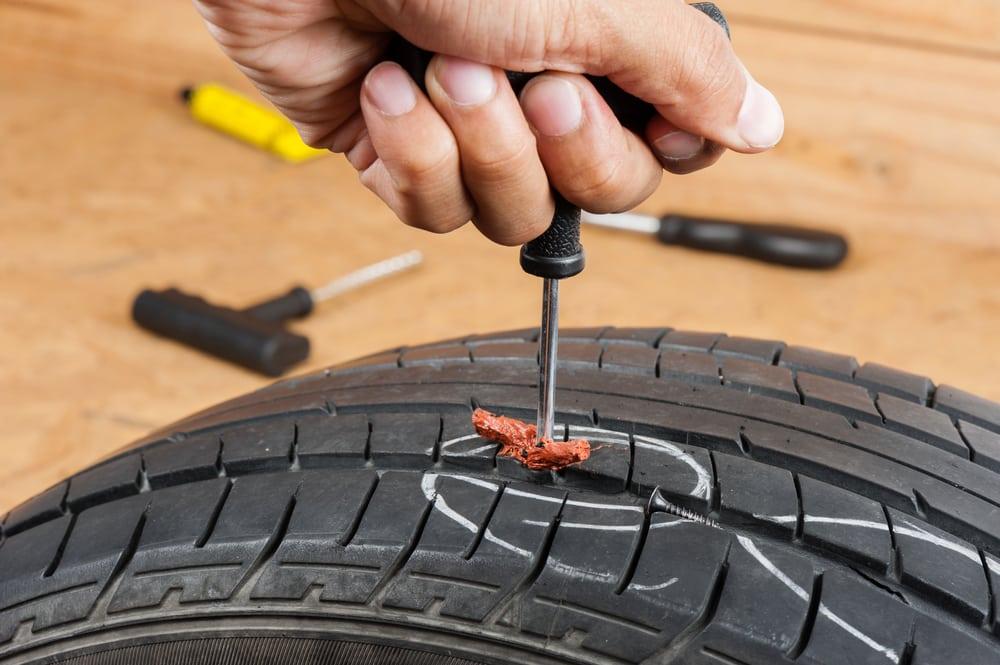As an Amazon Associate, I earn from qualifying purchases at no extra cost to you.
How Long Can I Drive on a Plugged Tire?
You can drive on a plugged tire for a short distance, but it’s not a long-term solution. Continuing to drive on a plugged tire can lead to further damage or a blowout.
Driving on a plugged tire is a temporary fix and not recommended for extended periods as it compromises tire safety. It’s essential to get your tire professionally repaired or replaced to ensure your safety on the road. Ignoring the issue can result in serious consequences, such as loss of control while driving or even accidents.
Safety should always be the top priority when it comes to vehicle maintenance. Remember to address tire issues promptly to prevent any potential risks while driving. Make sure to consult with a professional mechanic for proper tire repair or replacement.
Understanding Plugged Tires
When it comes to driving, it’s crucial to ensure your vehicle is in optimal condition. One common issue that drivers may encounter is a punctured tire. While it’s essential to address any tire damage promptly, understanding when a tire can be safely plugged is equally important. In this article, we will discuss what a plugged tire is and why it can be a controversial topic in the automotive world.
What Is A Plugged Tire?
A plugged tire refers to a tire that has been repaired by inserting a patch or plug into the punctured area. This repair method is typically performed on tubeless tires, the most common type of tires used in modern cars. The plug acts as a temporary fix, sealing the hole and preventing air from escaping.
Plugging a tire is a convenient and cost-effective solution, as it can be done quickly and does not require the tire to be replaced. However, it’s important to note that plugging should only be considered as a temporary fix, and the tire should be professionally inspected and repaired or replaced as soon as possible.
Why Are Plugged Tires Controversial?
The controversy surrounding plugged tires stems from concerns regarding safety and reliability. While a properly plugged tire can withstand normal driving conditions, it may not provide the same level of performance as an undamaged tire. Plugged tires are more susceptible to developing leaks or blowouts, especially if they are subject to additional impact or stress.
- Plugged tires may not offer the same level of traction as an undamaged tire, particularly in wet or slippery conditions.
- The plug itself can deteriorate over time, potentially causing the tire to lose air pressure and compromise safety.
- Some tire manufacturers and automotive experts caution against long-distance driving on a plugged tire, as the risk of failure increases with extended use.
While plugging a tire can be a temporary solution for minor punctures, it’s crucial to prioritize safety and have the tire professionally repaired or replaced as soon as possible.

Credit: treadconnection.com
Factors Affecting Driving On A Plugged Tire
Factors Affecting Driving on a Plugged Tire:
Tire Size And Location Of The Plug
The tire’s size and where the plug is placed impact how long you can drive on a plugged tire
Type And Quality Of The Plug
The type and quality of the plug used to repair the tire determine its durability and safety
Safety Considerations
Driving on a plugged tire can compromise safety, so it’s best to limit the distance traveled. The damage may worsen, leading to a potential blowout. It’s recommended to have the tire professionally repaired or replaced promptly to ensure road safety.
Understanding The Risks
Plugging a tire can compromise its integrity, increasing chance of blowout.Impact on handling, stability; increasing risk of accidents and injuries.Recommendations From Tire Experts
Check tire pressure regularly: Keeps the plugged tire stable and safe. Limit driving distance: Don’t exceed 50 miles at moderate speeds. Ensure tire is professionally inspected after plugging for safety.
Credit: carfromjapan.com
Legal And Insurance Implications
Driving with a plugged tire might seem like a convenient solution to the hassle of getting it repaired or replaced, but it’s essential to understand the legal and insurance implications of doing so. In this section, we will explore the legal regulations surrounding driving with a plugged tire, as well as the impact it can have on tire warranties and insurance coverage.
Legal Regulations On Driving With A Plugged Tire
When it comes to driving with a plugged tire, legal regulations can vary depending on your location. While there might not be specific laws prohibiting it, it is crucial to consider the potential risks involved. Plugging a tire is generally seen as a temporary fix, and it is recommended to have it inspected and repaired by a professional as soon as possible.
In certain states, driving with a plugged tire may be considered illegal due to safety concerns. For example, some states in the United States adhere to the guidelines set by the Tire Industry Association (TIA), which states that repairs should only be considered within the tread area and not on the sidewall or shoulder. Additionally, repair methods may need to comply with specific standards to be deemed legally acceptable.
Even in areas where there are no explicit regulations, driving with a plugged tire can still pose significant risks. Tire blowouts or loss of control can occur if the plugged area fails, jeopardizing your safety and the safety of those around you. Therefore, it is always advisable to follow manufacturer recommendations and consult with a professional tire technician.
Impact On Tire Warranties And Insurance Coverage
If you choose to drive on a plugged tire, it’s important to consider the potential impact on your tire warranties and insurance coverage. Many tire manufacturers explicitly exclude warranty coverage for tires that have been repaired using a plug. This means that in the event of any tire-related issues, you may be responsible for the full cost of repair or replacement.
Insurance coverage can also be affected when driving with a plugged tire. Insurers may view it as negligent behavior, potentially leading to denied claims or increased premiums. It is important to review your insurance policy carefully to understand the specific terms and conditions regarding tire repairs and replacements.
Furthermore, driving with a plugged tire can be seen as a lack of proper vehicle maintenance, which could impact your overall insurability. Insurers rely on the assumption that drivers take reasonable care of their vehicles, and overlooking necessary tire repairs could be seen as negligence.
In conclusion, while it may be tempting to continue driving on a plugged tire, it is crucial to consider the legal and insurance implications. It’s always recommended to consult with a professional tire technician to ensure your safety on the road and adhere to any regulations that may apply in your location.
Temporary Solutions While Driving On A Plugged Tire
When driving with a plugged tire, it’s crucial to have a temporary solution in place to safely reach your destination. Here are some options to consider:
Carrying A Portable Air Compressor
Having a portable air compressor in your car can be a lifesaver when dealing with a plugged tire. This compact and handy device allows you to reinflate the tire to the recommended pressure, giving you the ability to continue driving with minimal disruption.
Using Tire Sealant As A Temporary Fix
Tire sealant is another temporary solution that can help you drive on a plugged tire. This liquid formula can be injected into the tire, where it seals punctures and maintains tire pressure, allowing you to safely drive to a nearby service station for a more permanent repair.
Long-term Effects
Potential Impact On Tire Lifespan
A plugged tire can lead to reduced lifespan due to compromised structural integrity.
Monitoring Tire Pressure And Wear
Regularly check tire pressure and inspect for abnormal wear to prevent further damage.
Professional Inspection And Repair
When it comes to a plugged tire, it’s important to know when to seek professional evaluation and proper repair procedures. While driving on a plugged tire may seem convenient and cost-effective in the short term, it is crucial to remember that this is merely a temporary solution. Seeking professional inspection and repair for a plugged tire ensures your safety and the longevity of your tire.
When To Seek Professional Evaluation
There are certain situations where seeking professional evaluation for a plugged tire becomes necessary:
- If you experience a sudden loss of air pressure in the tire
- If you notice a bulge or bubble on the sidewall
- If the tire’s tread depth is below the recommended level
- If the tire has been driven on while significantly underinflated
When any of these signs are present, it is crucial to visit a professional tire repair shop as soon as possible. Ignoring these issues can lead to further damage, compromising your safety on the road.
Proper Repair Procedures
Proper repair procedures are essential to ensure the plugged tire remains safe and reliable:
- Consult with a professional tire technician: A skilled professional can assess the extent of the damage and advise on the most suitable course of action.
- Remove the tire for inspection: The tire should be taken off the wheel to thoroughly inspect the puncture and ensure it is within the repairable limits.
- Insert a plug or patch: Depending on the size and location of the puncture, a plug or patch may be applied to seal the hole and prevent air leakage.
- Reinstall and balance the tire: After the repair is completed, the tire should be carefully reinstalled onto the wheel and balanced to ensure proper handling and stability.
- Monitor tire pressure regularly: It is essential to monitor the plugged tire’s air pressure regularly, as any loss of pressure could indicate another issue that requires attention.
By following these proper repair procedures, you can trust that your plugged tire will be restored to a safe and dependable condition, allowing you to drive confidently on the road.

Credit: www.reddit.com
Conclusion And Recommendations
After driving on a plugged tire, it is recommended to have it inspected by a professional at the earliest convenience to ensure safety. Driving on a plugged tire for an extended period can compromise its integrity and pose risks. Follow manufacturer recommendations and prioritize safety over convenience when it comes to tire repairs.
Summary Of Key Considerations
Before we provide our conclusion and recommendations on how long you can drive on a plugged tire, it’s essential to summarize the key considerations that we’ve discussed so far:
- Plugging a tire is a temporary solution and should only be done as an emergency measure until a proper repair or replacement can be made.
- Driving on a plugged tire can compromise its structural integrity, leading to potential blowouts or other safety hazards.
- The size of the puncture and the location on the tire play a significant role in determining how long it can hold up under regular driving conditions.
- Consider the age and condition of the tire. Older tires may be more prone to further damage and may require immediate replacement.
- Keep in mind that driving on a plugged tire may also void any warranties or guarantees provided by the tire manufacturer.
Best Practices For Driving On A Plugged Tire
To ensure your safety and the longevity of your tire, it’s crucial to follow these best practices when driving on a plugged tire:
- Regularly monitor the tire: Keep a close eye on the plugged tire, checking for any signs of deflation, bulging, or other visible damage.
- Maintain proper tire pressure: Ensure that the plugged tire is inflated to the manufacturer’s recommended pressure to reduce the risk of further damage.
- Limit driving distances: Avoid long drives or excessive mileage on a plugged tire. It’s best to use it strictly for essential trips and visit a tire professional as soon as possible.
- Drive cautiously: Adjust your driving habits to be more cautious and avoid sudden maneuvers or rough road conditions that may put additional strain on the plugged tire.
Remember, these best practices are temporary measures. It’s crucial to have the plugged tire inspected and repaired or replaced by a certified tire professional at the earliest opportunity.
Conclusion
To wrap up, driving on a plugged tire is a short-term solution. While you may be able to drive on it for a limited distance or until you reach the nearest tire shop, it’s important to remember that a plugged tire is compromised in terms of safety and performance.
Instead, it’s best to get the tire repaired or replaced as soon as possible to avoid any potential risks on the road. Stay safe and prioritize the well-being of your vehicle and yourself.


